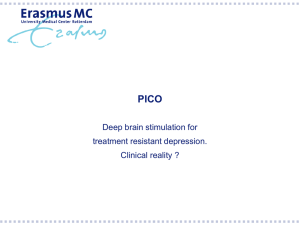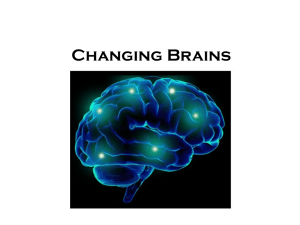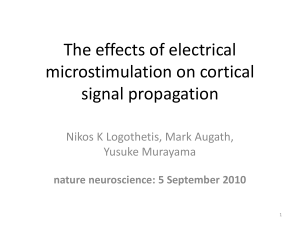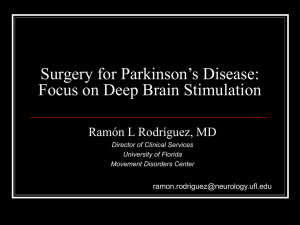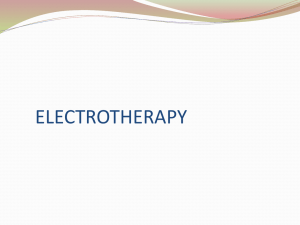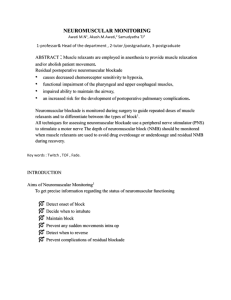Final Presentation()
advertisement
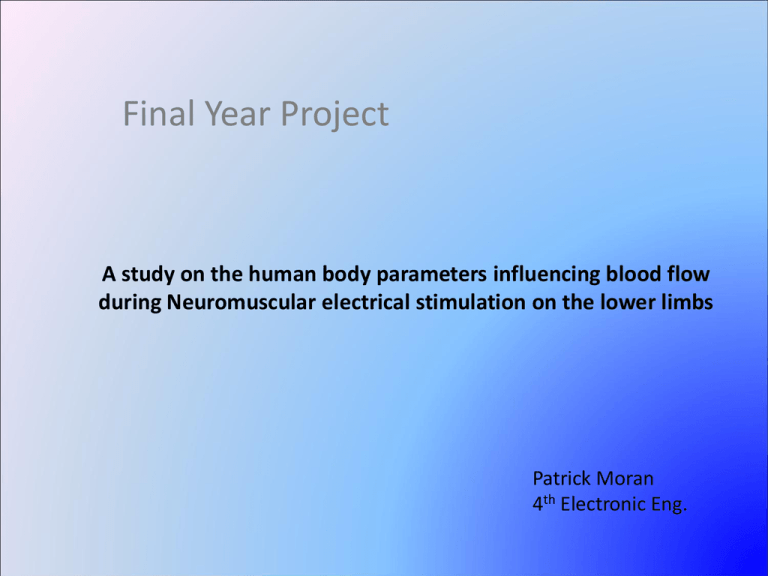
Final Year Project A study on the human body parameters influencing blood flow during Neuromuscular electrical stimulation on the lower limbs Patrick Moran 4th Electronic Eng. Project Objectives To examine if the effectiveness of Neuromuscular Electrical Stimulation is influenced by the following: • Anthropometrics of the calf Muscle •Body mass Index •Body Fat •Muscle Volume •Isometric Ankle Torque And to establish any relationships that may exist Neuromuscular Electrical Stimulation What is Neuromuscular Electrical Stimulation? Application of electrical stimuli to a group of muscles to trigger an artificial muscle contraction Where is Neuromuscular Electrical Stimulation used? • Correction of drop foot • Muscle strengthening • Mobilisation of spinal cord injury • Maintaining range of motion in immobilised subjects Neuromuscular Electrical stimulation in this study Surface Neuromuscular electrical stimulation shall be used in this study. Source of stimulation would be The Dou – STIM Stimulation parameters • Max Voltage (100%) = 78Volts • Ramp up time = 1 second • On Time = 1 second • Ramp Down Time = 500 milliseconds • Frequency = 36 Hertz • Pulse Interval = 100μseconds • Pulse Width = 100 μseconds . About the Study • Electrodes Placed on calf muscle • Blood flow examined from popliteal Vein using doppler ultrasound scanner • Stimulation was started at 25% and incremented in steps of 5%, until the subject stated that they no longer found it comfortable • Ethics Application - NUI Galway Research Ethics Committee Results The subjects were examined individually first. The following relationships were established while looking at the subject’s results as individuals. • • • • Stimulation Intensity Vs Venous Volume Flow Stimulation Intensity Vs Isometric Ankle Torque Isometric Ankle Torque Vs Venous Volume Flow Stimulation Intensity Vs Peak Venous Velocity Then the results were looked at from a group perspective. It was hoped to establish any relationships that may exist between the correlations obtained from the individual results and the anthropometrics of the lower limbs or the subject’s body mass index. A p value of < 0.05 was considered significant in all analyses. Stimulation Intensity Vs Venous Volume Flow The correlation values ranged from 0.911 ‐ 0.997. The regression calculations ranged from 0.83 ‐ 0.995. No p - value was greater than 0.05 Stimulation Intensity Vs Ankle Torque The correlation values ranged from 0.911 ‐ 0.997. The regression calculations ranged from 0.774 ‐ 0.971. No p - value was greater than 0.05 Venous Volume Flow Vs Ankle Torque The correlation values ranged from 0.894 ‐ 0.996. The covariance's calculated were all positive indicating a relationship. No p - value was greater than 0.05 Stimulation Intensity Vs Peak Venous Velocity The correlation values ranged from 0.911 ‐ 0.997. The regression calculations ranged from 0.774 ‐ 0.971. No p - value was greater than 0.05 Group results Conclusion The effects of NMES on blood flow were proven, very significant relationships were found between: • Stimulation Intensity Vs Venous Volume Flow • Stimulation Intensity Vs Isometric Ankle Torque • Isometric Ankle Torque Vs Venous Volume Flow • Stimulation Intensity Vs Peak Venous Flow The fact that no relationships were found between these and the human body parameters can be put down to a small sample size and possibly human error. Questions

